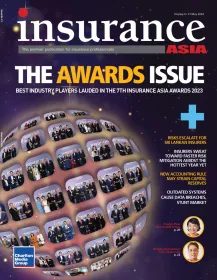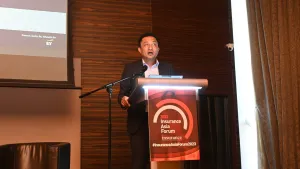
Swiss Re predicts $4t surge in life savings premiums by 2033 amid pension and retirement savings concerns
An estimated retirement savings gap of $106t exists across government-provided, employer-based, and individual pension savings in eight major economies in 2022.
The life savings market is expected to expand significantly as the global middle class embraces retirement planning and incomes in emerging markets increase. With $2.3t of savings premiums written globally in 2022, this figure is forecasted to grow to $4.0t globally in 2033, reflecting a 2.7% average annual growth rate in real terms, according to Swiss Re’s latest study.
This would result in an additional $1.7t of savings premiums over the next decade, a 65% increase compared to the past two decades.
The report “A retirement lifeline” said the life re/insurance industry has a unique opportunity to play a crucial role in addressing the challenges of retirement preparedness in the private savings market.
With the burden of retirement savings increasingly falling on individuals, especially due to ageing populations straining pension systems, there is a growing concern that the current rate of global retirement savings is insufficient.
An estimated retirement savings gap of $106t exists across government-provided, employer-based, and individual pension savings in eight major economies in 2022, averaging 270% of these countries’ gross domestic product.
This gap is projected to reach $483t by 2050, equivalent to around $450,000 per capita in the UK and the US. Annual gap growth is expected to be 2.5% in Japan and 4.7% in the US, with faster expansion in emerging markets like China (7%) and India (10%)
Recognising this significant gap, life insurers have the potential to address the growing long-term private savings needs by generating new demand.
This growth forecast for the next decade is notably higher than the past 20 years, influenced by factors such as the global financial crisis, the era of low interest rates, and the recent pandemic.
The current higher interest rate environment is anticipated to improve life insurance profitability, marking a potential return to meeting the sector's cost of capital after more than a decade of losses.
ALSO READ: Swiss Re aims for $3.6b in net income amidst IFRS shift
Opportunities for insurers
To capitalise on this opportunity and differentiate insurance-saving products, life insurers may consider freeing up capital, enhancing underwriting capacity, and focusing on product innovation for capital-light growth.
Reinsurance can play a crucial role in supporting the life sector by optimising in-force portfolios and facilitating the introduction of new products.
This includes various strategies such as coinsurance with funds withheld structures, mass lapse covers, value-in-force (VIF) monetization, longevity swaps, and funded reinsurance.
In addition, reinsurance can help stabilise balance sheets, reduce earnings volatility, and enhance capital efficiency.
For new businesses, reinsurance can aid life insurers in developing competitive index-linked products (ILP) with guaranteed minimum benefits (GMB) riders, innovative investment strategies, and building underwriting capacity through funded reinsurance.
Moreover, the evolving landscape of long-term saving pools requires life insurers to be agile in anticipating customer needs and aligning their offerings with emerging trends, particularly in digital channels. Initiatives such as developing new convertible life products and increasing financial literacy can further contribute to narrowing the retirement savings gap. Additionally, aligning offerings with evolving sustainability preferences among younger cohorts in Europe and Asia can be advantageous for life insurers.











 Advertise
Advertise












